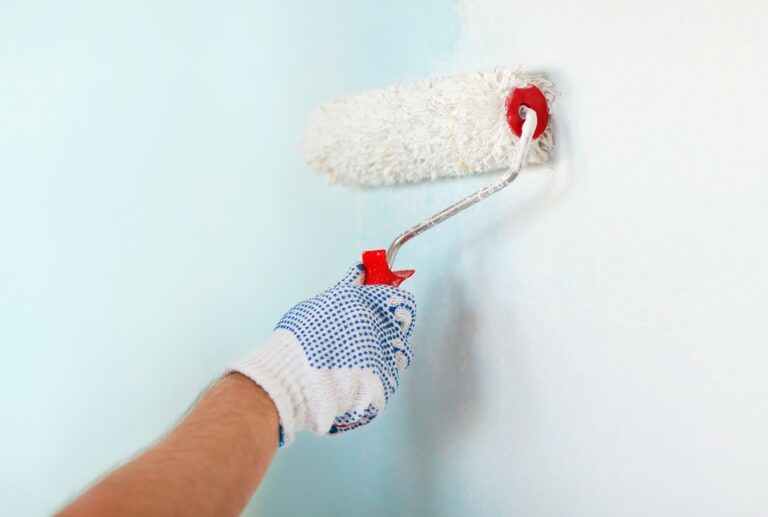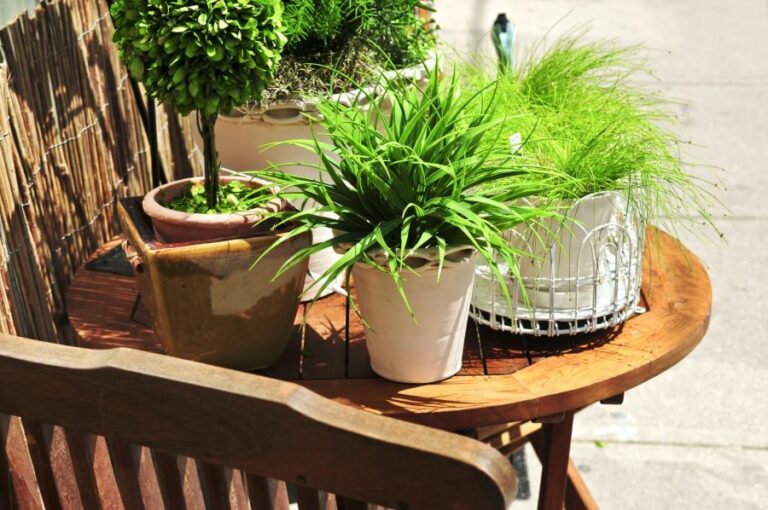Outdoor Fabric Spray Paint: The Secret to a Stunning Makeover
Discover your outdoor space’s easy and affordable transformation with the magic of outdoor fabric spray paint. This blog post will show how this versatile solution breathes new life into your patio cushions, umbrellas, and more. Say goodbye to faded or outdated patterns on your garden furniture and unleash your creativity as we explore the innovative world of outdoor fabric spray paint.
Why splurge on expensive replacements when you can revive, personalize and protect your existing decor? Read on to unlock the secrets to a stunning outdoor makeover. No experience is required!
Outdoor fabric spray paint:
Outdoor fabric spray paint is an innovative, cost-effective, and time-saving solution for updating and refreshing outdoor textiles, such as patio furniture, boat seats, and umbrellas. The paint can be applied to various materials, including canvas, nylon, polyester, and leather, and comes in various colors. It’s UV and fade-resistant, ensuring a long-lasting result.
Proper surface preparation, application techniques, and following helpful tips and tricks can help achieve professional-looking outcomes. Some recommended products are Rust-Oleum Fabric & Vinyl Spray, Simply Spray Outdoor Paint, and Dupli-Color Vinyl & Fabric Coating.

Discover the transformative power of outdoor fabric spray paint! Breathe new life into patio furniture, umbrellas, and cushions with ease. Our comprehensive guide will teach you how to choose, apply and maintain your outdoor makeover, ensuring lasting results. Keep reading to upcycle your space!
Contents
- 1 Exterior Textile Spray Paint
- 2 Is it Possible to Use Spray Paint on Outdoor Fabric Material?
- 3 What Type of Paint Should You Utilize on Exterior Fabric Materials?
- 4 Is Fabric Spray Paint Truly Effective in Achieving the Desired Results?
- 5 Does Outdoor Fabric Paint Possess Waterproof Qualities?
- 6 Is it Possible to Apply Spray Paint on Fabric Materials?
Exterior Textile Spray Paint
• Revamp Your Outdoor Textiles with Fabric Spray Paint
Outdoor fabric spray paint is an innovative and versatile solution to update and refresh the look of your outdoor textiles. Whether you are tired of your dull patio furniture, want to give new life to your boat seats, or want to add color to your outdoor umbrella, outdoor fabric spray paint is a great way to achieve these goals.
We will explore the benefits of outdoor fabric spray paint, how to use it correctly, recommended products, and some helpful tips to make your painting project successful.
• Advantages of Outdoor Fabric Spray Paint
Choosing fabric spray paint for outdoor textile projects has multiple benefits. Some of the main advantages include the following:
– Cost-Effective Solution
Purchasing new outdoor cushions or furniture can be expensive. Outdoor fabric spray paint offers a budget-friendly alternative to transform the appearance of your existing textiles. A single can of fabric spray paint typically covers a large area, allowing you to update multiple items with minimal cost.
– Time-Saving
Refurbishing your outdoor textiles with outdoor fabric spray paint is a faster alternative to traditional methods such as reupholstering. A simple spray application can achieve professional-looking results in a fraction of the time.
– Versatile and Customizable
Outdoor fabric spray paint can be applied to various materials, including canvas, nylon, polyester, and leather. Furthermore, spray paint is available in many colors, allowing you to be as creative as you wish in your design choices.
– UV and Fade-Resistant
Many outdoor fabric spray paints are specifically designed for outdoor use and include properties that resist fading from sunlight, ensuring your revamped textiles maintain their vibrant appearance longer.
• How to Apply Outdoor Fabric Spray Paint
Before you begin spraying, preparing the surface of the textile you wish to paint is important. Proper preparation will help ensure a smooth application and long-lasting results.
– Prepping the Surface
- Clean: Ensure the surface is free of dirt and debris.
- Dry: Allow the fabric to dry completely.
- Sand: If the material is rough, lightly sand the surface to create a smoother painting area.
- Tape: Use painter’s tape to cover any areas you do not want to be painted.
– Spraying your Textile
- Shake: Shake the can of outdoor fabric spray paint for at least one minute.
- Test: Perform a test spray on a scrap piece of fabric or an inconspicuous area to ensure proper flow and color.
- Apply: Hold the can 12-18 inches from the surface at a slight angle. Use a steady, sweeping motion to apply the paint in thin coats, allowing each layer to dry before applying the next. This will help prevent any paint from dripping and ensure even coverage.
- Dry: Allow the paint to dry for the recommended time on the product label before exposing the item to outdoor elements.
• Recommended Products
While several brands offer outdoor fabric spray paint, below are some top-rated products based on personal experience and customer reviews.
– Rust-Oleum Fabric & Vinyl Spray
Rust-Oleum’s Fabric & Vinyl Spray offers a durable, flexible coating for outdoor textiles. This product is designed to be fade-resistant and provides excellent adhesion without harming the material.
– Simply Spray Outdoor Paint
This non-toxic, water-based paint is specially formulated for outdoor use, offering UV protection and exceptional coverage. Simply Spray Outdoor Paint is waterproof and weather-resistant, making it an ideal choice for revitalizing patio furniture, boat seats, and other outdoor textiles.
– Dupli-Color Vinyl & Fabric Coating
Dupli-Color’s Vinyl & Fabric Coating is known for its exceptional coverage and durability. This product is specifically designed to bond with various materials, making it a versatile choice for updating the appearance of outdoor fabrics.
• Tips and Tricks for Success
- Choose the right color: Remember that applying a lighter color of outdoor fabric spray paint over a darker fabric may require additional coats to achieve the desired look. In these cases, using a primer can help improve coverage.
- Avoid oversaturating: Applying excess paint or holding the can too close to the textile can cause paint to pool and create an uneven finish or damage the material. Use light coats and keep a consistent distance from the fabric to achieve the best results.
- Store properly: Ensure your outdoor fabric spray paint is stored in a cool, dry location and is protected from extreme temperatures or moisture. Proper storage will help ensure the longevity and effectiveness of the product.
- Practice patience: Achieving a professional-looking result requires patience and attention to detail, so be prepared to spend some time working carefully and methodically.
In conclusion, outdoor fabric spray paint is a versatile, cost-effective, and time-saving solution for updating and refreshing the appearance of your outdoor textiles. By understanding the benefits, applying the product properly, and using helpful tips and tricks, you can transform your worn and outdated outdoor fabrics into vibrant and functional pieces that will make your outdoor space more enjoyable for years to come.
Is it Possible to Use Spray Paint on Outdoor Fabric Material?
Spray painting outdoor fabric is popular for revamping old, faded, or stained furniture and decorations. We will discuss the entire process of spray painting outdoor fabric, covering topics such as choosing the right paint and fabric, preparing the fabric for painting, and providing tips for achieving the best results.
• Choosing the Right Spray Paint
It is essential to use spray paint specifically designed for use on outdoor fabric. These paints are formulated to adhere to the fabric while remaining flexible and resistant to fading or flaking from exposure to the elements.
– Specially-Formulated Fabric Paints
When looking for outdoor fabric spray paint, seek out cans labeled specifically for use on fabric. These paints are designed to bond with the fabric’s fibers and maintain their flexibility once dried. Some popular brands of fabric spray paint include Rust-Oleum, Krylon, and Dupli-Color.
– UV-Resistant Spray Paints
Outdoor fabrics are exposed to harsh sunlight and UV rays, which can cause the colors to fade quickly. Choosing a spray paint resistant to UV rays is essential to ensure your finished project maintains its vibrant colors for an extended period.
• Suitable Outdoor Fabrics for Spray Painting
Not all outdoor fabrics are suitable for spray painting. Choosing a fabric that can adequately absorb and hold the paint is important.
– Best Fabric Choices
Ideal fabric choices for spray painting include:
- Canvas
- Cotton
- Polyester
- Olefin
- Acrylic
These fabrics are known for their ability to hold paint well and their durability when exposed to outdoor elements.
– Fabrics to Avoid
Avoid fabrics that have a tight weave or are coated with a water-resistant or waterproof treatment, as these may prevent proper paint adhesion. Some examples of fabrics to avoid include:
- Vinyl
- Tightly woven synthetic fabrics
- Fabrics with a silicone or Teflon coating
• Preparing the Fabric for Painting
The fabric must be properly cleaned and prepared for a successful paint job.
– Cleaning the Fabric
- Remove any loose dirt, debris, and cobwebs from the fabric by wiping it down with a dry cloth or soft brush.
- If the fabric is stained or soiled, clean it using a mild detergent and a scrub brush or sponge. Rinse thoroughly and allow it to dry completely.
- For fabrics with mold or mildew, mix a solution of one part bleach to four parts water and apply it to the affected areas. Allow it to sit for about 20 minutes before rinsing it with clean water. Let the fabric dry before painting.
– Prepping the Fabric
- Before painting, lay a drop cloth or plastic sheet below the fabric to protect the surrounding area from overspray.
- Remove any cushions or padding from the fabric if possible, as the paint may not adhere to these materials. If you cannot remove these items, cover them with plastic or painter’s tape to protect them from the paint.
• Spray Painting Techniques
To achieve professional, long-lasting results, follow these spray painting techniques:
– Proper Distance
When spray painting, maintain a 10-12 inches distance between the spray nozzle and the fabric. This will ensure an even, smooth application of the paint.
– Light, Even Strokes
Apply the paint using light, even strokes. Start by spraying off the edge of the fabric and moving across it in a smooth, steady motion. Continue this process, overlapping each stroke slightly until the entire surface is covered.
– Multiple Thin Coats
Applying several thin coats will yield better results than covering the fabric in one thick coat. Allow each coat to dry for about 30 minutes to one hour before applying the next coat. Two to three coats are typically sufficient.
– Avoiding Drips and Runs
To prevent drips and runs in your paint job, keep the can moving at all times and avoid holding it in one spot for too long.
• Finishing Touches
Once you have finished painting the fabric, allow it to dry for at least 24 hours before using or exposing it to the elements. For added protection against fading and weathering, consider applying a UV-resistant clear coat to the dried paint.
In conclusion, spray painting outdoor fabric can be an effective and affordable way to give your outdoor furniture and decorations new life. By selecting the proper paint and fabric, correctly preparing the surface, and using the right spray painting techniques, you can achieve professional, durable results that will last for years.
What Type of Paint Should You Utilize on Exterior Fabric Materials?
Selecting the appropriate paint for outdoor fabric can seem daunting, especially with the many available options. However, knowing the specific criteria to look for and understanding the differences between various types of paint can help ease the decision-making process.
Let’s discuss some popular outdoor fabric paint options, their unique characteristics, and when to use them.
• Acrylic Paints: A Versatile Option
Acrylic paints are one of the most common choices for outdoor fabric painting. They are water-based and offer numerous advantages, such as quick-drying properties, resistance to light, and wide availability of colors.
Moreover, acrylic paints provide a flexible and durable finish, making them an ideal choice for numerous projects involving outdoor fabrics.
– Benefits of Acrylic Paints
- Wide color range: Acrylic paints come in vast colors, allowing you to create virtually any design or pattern you’d like.
- UV resistance: Acrylic paint is less likely to fade when exposed to sunlight, an essential feature for outdoor fabrics that receive direct sunlight.
- Easy to use: Acrylic paints are straightforward to apply and don’t require any special equipment or tools.
– Tips for Using Acrylic Paints on Outdoor Fabric
- Prepare the fabric by cleaning it thoroughly and allowing it to dry completely before painting.
- Mix the paint with a fabric medium to improve adhesion and ensure a flexible finish that won’t crack or peel over time.
- Apply the paint in thin layers, allowing each layer to dry before adding the next.
• Fabric Spray Paint: A Convenient Choice
Fabric spray paints are another popular option for painting outdoor fabrics. These paints are specifically designed for fabrics and come in a spray can, which makes application quick and easy. Fabric spray paints are suitable for large or intricate projects that may be challenging to complete using a brush or sponge.
– Benefits of Fabric Spray Paints
- Ease of application: Spray paints eliminate the need for brushes and other application tools, streamlining the painting process.
- Quick coverage: Fabric spray paints offer fast and even coverage, even on large-scale outdoor fabric projects.
- Durable finish: Many fabric spray paints are designed to resist fading, cracking, and peeling, ensuring a long-lasting and attractive result.
– Tips for Using Fabric Spray Paints on Outdoor Fabric
- Shake the spray can well before use to ensure even color distribution.
- Hold the can consistently from the fabric while spraying to avoid pooling or uneven coverage.
- Apply multiple thin coats, leaving adequate drying time between applications for a smooth and durable finish.
• Vinyl and Fabric Paint: A Durable Alternative
Vinyl and fabric paints are designed for outdoor fabric, providing a durable and weather-resistant finish. These paints are especially popular for upholstery, automotive interiors, and other fabric projects requiring a long-lasting, protective coating.
– Benefits of Vinyl and Fabric Paint
- Ultimate durability: Vinyl and fabric paints provide a robust, long-lasting finish that resists wear, fading, and environmental damage.
- Wide range of applications: These paints are suitable for various outdoor fabric projects, including furniture, boat covers, and automotive interiors.
- Excellent adhesion: Vinyl and fabric paints are formulated to bond securely to fabric surfaces, ensuring minimal peeling or cracking.
– Tips for Using Vinyl and Fabric Paint on Outdoor Fabric
- Clean the fabric surface thoroughly and follow any specific paint manufacturer’s surface preparation instructions.
- As the product label directs, apply the paint in thin, even coats using a brush, sponge, or spray canister.
- Allow sufficient drying time between coats to ensure no unwanted peeling or cracking occurs.
• Final Thoughts
Choosing the right paint for your outdoor fabric project is essential to achieving a long-lasting and attractive result. Acrylic paints, fabric spray paints, and vinyl and fabric paints are all viable options, depending on your specific needs and desired outcome.
Consider factors such as ease of application, durability, and UV resistance when selecting the ideal paint for your outdoor fabric. Ultimately, following the manufacturer’s instructions and employing best practices during the painting process will ensure a successful and visually pleasing result.
Paint Type | Description | Uses |
|---|---|---|
Acrylic Fabric Paint | Water-based paint that dries quickly and is permanent once dry. Suitable for various fabrics | Outdoor cushions, umbrellas, and canvas fabrics |
Outdoor Spray Paint | Specifically formulated for outdoor fabric use. Provides even coverage and UV protection | Outdoor furniture, umbrellas, and other large fabric items |
Screen Printing Ink | Designed for use on fabrics, providing a soft feel and long-lasting results | Outdoor banners, flags, and fabric signs |
Is Fabric Spray Paint Truly Effective in Achieving the Desired Results?
Fabric spray paint is a quick and easy way to bring new life to your old or faded fabrics. But with so many products on the market, it’s natural to question whether fabric spray paint works. We will delve into fabric spray paint, its uses, and factors that may determine its effectiveness.
• What is Fabric Spray Paint?
Fabric spray paint is specially formulated for fabrics, including clothing, upholstery, and other textile items. It is typically sold in aerosol cans or bottles with a spray nozzle, allowing for even and controlled application onto the fabric.
Unlike traditional paint, which can stiffen or crack when applied to fabrics, fabric spray paint is intended to maintain the flexibility and softness of the material while providing a durable, long-lasting color.
• When to Use Fabric Spray Paint
Fabric spray paint is an ideal solution for a variety of situations, including:
- Reviving Faded Fabrics: Over time, clothing and textiles can lose their original vibrancy due to wear and tear or sun exposure. Fabric spray paint offers a quick and affordable way to refresh and restore the color of these items.
- Restyling Clothing: You can use fabric spray paint to create unique designs and patterns on your clothing, from t-shirts to jeans.
- Upcycling Furniture: Instead of replacing faded or outdated upholstered furnishings, you can use fabric spray paint to give them a fresh look.
- Creative Crafts: Fabric spray paint is a popular choice for DIY craft projects, such as stenciling designs onto fabric tote bags, pillows, or other home decor items.
• Factors that Affect Fabric Spray Paint Effectiveness
Not all fabric spray paint is created equal. Several factors can influence the overall effectiveness of the product.
– Type of Fabric
Fabric spray paint adheres best to natural fibers, such as cotton, linen, and silk. Synthetic materials, like polyester and nylon, may not absorb the paint as well or may require a fabric paint medium to achieve better results.
It’s essential to check the product label or manufacturer’s recommendations to ensure the fabric spray paint is compatible with the fabric you intend to use.
– Quality of the Fabric Spray Paint
The quality and brand of fabric spray paint can also impact its effectiveness. Some cheaper, low-quality products may not provide the desired coverage or may deteriorate quickly after application. Investing in a reputable, high-quality fabric spray paint is worth ensuring the best possible results.
– Proper Application and Technique
Applying fabric spray paint correctly is critical to its effectiveness. Before beginning any project, it is essential to:
- Prepare the fabric by prewashing, drying, and ironing to remove any dirt or wrinkles that may interfere with the paint’s adhesion.
- Use masking tape or plastic sheeting to protect your work surface and any areas of the fabric that you do not want to be painted.
- Shake the fabric spray paint can or bottle thoroughly to mix the paint and ensure consistent color.
- Hold the spray nozzle approximately 6-8 inches from the fabric’s surface for an even, controlled application.
- Apply multiple thin coats, allowing each coat to dry completely before applying the next to achieve the desired level of coverage and color.
– Curing and Heat-Setting the Paint
Once the fabric spray paint has been applied and is completely dry, it is necessary to heat-set the paint to help it bond to the fibers effectively. Depending on the manufacturer’s recommendations, this process can be done using a clothes iron or a tumble dryer.
Heat-setting the fabric spray paint ensures it is more resistant to fading, cracking, or peeling, allowing it to maintain its appearance even after washing.
• Overall Effectiveness of Fabric Spray Paint
When used properly and on appropriate fabric types, fabric spray paint can be a very effective and versatile tool in refreshing, restyling, or decorating textiles. Investing in a quality product and carefully following the application and curing instructions is vital.
I recommend testing the fabric spray paint on a small, inconspicuous area before committing to a full project to assess its compatibility and coverage on your chosen fabric type. This way, you can confidently embark on your creative endeavors with the knowledge that fabric spray paint does work.
Does Outdoor Fabric Paint Possess Waterproof Qualities?
• Understanding Outdoor Fabric Paint
As the name suggests, outdoor fabric paint is specifically designed for use on fabrics exposed to the elements, such as patio furniture, awnings, and boat covers. What makes it different from conventional fabric paint is its resistant properties against harsh outdoor weather conditions, such as sunlight, rain, and humidity. Such aspects, coupled with its durability and adherence to various fabric types, make it an ideal choice for outdoor projects.
• Waterproof or Water-Resistant: The Difference
Before delving into whether outdoor fabric paint is waterproof, it is crucial to understand the difference between waterproof and water-resistant qualities.
– Waterproof
A material or product labeled as waterproof indicates that it offers complete protection against water ingress, even if submerged. Typically, such products possess a barrier or film that entirely restrains the penetration of water molecules, making it ideal for applications where exposure to water is common.
– Water-Resistant
On the other hand, when a product claims to be water-resistant, it implies that it can resist but not entirely prevent water penetration. Generally, such products have a certain resistance level, meaning they can adequately safeguard against light to moderate moisture exposure.
Understanding this distinction is crucial when analyzing the eligibility of outdoor fabric paint for waterproof applications.
• Evaluating the Waterproof Properties of Outdoor Fabric Paint
Many outdoor fabric paints in the market claim to be water-resistant, but the extent of this property varies from product to product. It is essential to note that the ability of a paint to prevent water ingress depends on several factors:
– Quality of the Paint
As noted earlier, the resistance offered by outdoor fabric paint can vary depending on the product chosen. High-quality, reputable brands are more likely to provide greater resistance and durability than their cheaper counterparts.
Therefore, investing in a reliable product from a reliable manufacturer with suitable testimonials and reviews supporting their water-resistance claims is advisable.
– Method of Application
The effectiveness of outdoor fabric paint largely depends on its application process. To achieve the desired results, follow the manufacturer’s instructions regarding surface preparation, painting techniques, and drying time.
These guidelines are vital preconditions to ensure the paint adheres well to the fabric, creating a resistant layer to protect against moisture and other elements.
– Type of Fabric
The choice of fabric also impacts the performance of outdoor fabric paint. Certain fabric types are more conducive to water-resistant painting, while others may not benefit significantly. Generally, synthetic materials, such as acrylic and polyester, showcase higher compatibility with outdoor fabric paint regarding water resistance.
Natural fibers, such as cotton or linen, may yield less favorable results, although quality paint can still improve their resistance to some extent.
– Multiple Layers
Applying multiple coats of outdoor fabric paint is advisable when aiming for optimal water resistance. A single layer might not be sufficient to protect against water ingress. Consequently, applying several thin layers, allowing each one to dry before applying the next, can bolster the overall water-resistant properties of the paint.
• Recommendations for Waterproofing Outdoor Fabric Paint
While it is clear that outdoor fabric paint can be water-resistant, it may not necessarily guarantee complete waterproofing. Therefore, to ensure the best possible protection of your outdoor fabric projects, consider the following supplementary measures:
- Seal your project using a waterproofing spray after applying outdoor fabric paint. These sprays create an additional protective layer, further enhancing the fabric’s defense against water penetration.
- Choose fabrics with inherent water-resistant properties, such as acrylic, olefin, or marine vinyl. Combining these materials with quality outdoor fabric paint can provide excellent protection against weather elements, particularly moisture.
- Regular maintenance is crucial to maintain the water-resistant properties of painted fabric. Periodically assess your project for signs of wear, fading, or chipping paint, and promptly re-apply paint or sealer to ensure continuous and effective protection.
• Final Thoughts
To reiterate, outdoor fabric paint does exhibit water-resistant properties, with its effectiveness hinging on the product’s quality, application technique, fabric choice, and the number of layers applied. However, it does not provide a full-fledged waterproof guarantee.
For optimal protection against water ingress, combine outdoor fabric paint with supplementary waterproofing measures, such as waterproof sprays or water-resistant fabrics.
Is it Possible to Apply Spray Paint on Fabric Materials?
Regarding DIY projects and upcycling, spray paint is popular for transforming various surfaces. It’s easy to use, quick to dry, and available in many colors. But what about using spray paint on fabric? The answer is yes, you can!
Spraying paint on fabric can yield beautiful results with the right preparation and techniques. This comprehensive guide will cover the ins and outs of spray painting fabric, including the paint types, how to prepare your fabric, and tips to achieve an expert finish.
• Choosing the Right Spray Paint for Fabric
Several types of spray paint are on the market, and choosing the right one for your fabric project is crucial for a successful outcome.
Remember that not all spray paints are suitable for fabric, so read the labels before deciding. Here are a few options to consider when searching for fabric-appropriate spray paint:
– Fabric Spray Paint
As the name suggests, fabric spray paint is designed specifically for fabric use. This type of paint is formulated to be colorfast, flexible, and resistant to cracking, ideal for creating a long-lasting finish on various textiles.
Fabric spray paint is available in various colors and finishes, making it a versatile choice for your fabric projects.
– Vinyl and Fabric Spray Paint
Vinyl and fabric spray paint is another excellent option for fabric use, as it adheres well to vinyl and fabric surfaces. This type of paint is perfect for items such as outdoor cushions, automotive upholstery, and other materials that require a durable, flexible finish.
Be sure to choose a paint formulated for outdoor use if you’re working on a project exposed to the elements.
– Soft Fabric Paint
Soft fabric paint is a spray paint formulated to maintain the soft texture of the fabric upon which it is applied. This paint is ideal for use on garments, as it won’t create a stiff, uncomfortable feel once dry.
Make sure to test a small area before spraying your entire project to ensure the paint maintains the desired level of softness.
• Preparing Your Fabric for Spray Painting
Before spray painting your fabric, preparing the material properly is crucial. Follow these steps to ensure a smooth, even application:
– Wash and Dry
First, wash and dry your fabric to remove any dirt, dust, or oils that might interfere with the adhesion of the paint.
Be sure to follow the manufacturer’s care instructions when laundering your fabric, and be aware that some fabrics may shrink slightly when washed.
– Iron and Stretch
For the best results, iron your fabric to remove any wrinkles, as creases can prevent the paint from adhering evenly.
Once your fabric is wrinkle-free, stretch it out and secure it to a flat surface using tape or pins, ensuring it’s taut and smooth.
– Protect Your Workspace
Spray paint can be messy. Before you begin, protect your workspace by covering the area with a drop cloth, cardboard, or newspaper to catch any overspray.
Additionally, working in a well-ventilated area is important to minimize the risk of inhaling paint fumes.
• Tips for Spraying Paint on Fabric
Now that you’ve chosen the right paint and prepared your fabric, it’s time to start spray painting. Follow these expert tips for a smooth, even finish:
– Shake the Can
To ensure proper paint mixing and even pigment distribution, shake the can of spray paint thoroughly for at least a minute before using.
– Test Your Spray
Before applying paint to your fabric, test the spray on a piece of cardboard or scrap fabric to get a feel for the spray pattern and flow.
– Hold the Can at the Proper Distance
When spraying paint on fabric, hold the can approximately eight to ten inches away from the material, maintaining a consistent distance as you spray.
– Spray in Thin, Even Coats
For the best results, apply thin, even coats of paint with a sweeping motion. Be patient and allow each coat to dry completely before adding the next.
– Keep it Light
Avoid applying too much paint at once, as this can cause the fabric to become stiff and may lead to cracking or flaking over time.
– Allow for Ample Drying Time
Once you’ve achieved the desired coverage and appearance, allow the fabric to dry for at least 24 hours before handling or using.
• Additional Tips and Tricks
- Practice makes perfect if you’re new to spray painting fabric. Test your skills on a scrap piece or an area of your project that won’t be visible when completed.
- To create fun designs or patterns, use stencils, tape, or other materials to mask off areas of the fabric before spraying.
- Remember to follow the care instructions on your fabric paint, as some may require heat setting, while others may not be suitable for washing or dry cleaning.
In conclusion, spray painting fabric is a versatile and creative way to upcycle, personalize, or rejuvenate various fabric-based items. By choosing the correct paint, preparing your fabric, and using the proper spraying techniques, you can achieve stunning results that will last. Don’t be afraid to experiment and make your projects uniquely your own. Happy spray painting!
Question | Answer |
|---|---|
Can you use spray paint on the fabric? | Yes, but it’s recommended to use fabric-specific spray paint to ensure the best results and avoid potential damage to the fabric. Always follow the manufacturer’s instructions and test on a small, inconspicuous area before applying to the entire fabric. |







